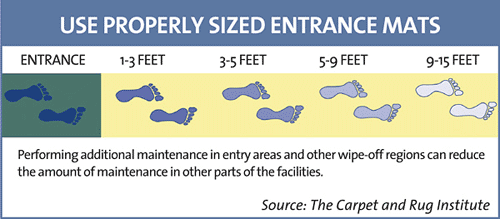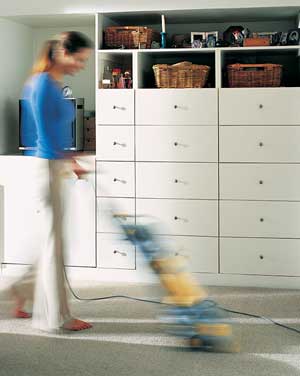Carpet for Schools: A Sustainable Solution that Enhances Learning and Health
While carpet cleaning products, methods and equipment are improving all the time, not all cleaning products clean equally well. Industry experts have tested an assortment of carpet cleaning solutions and equipment and found a wide variance in how well these products work, with some products even damaging carpet. The Seal of Approval (SOA) identifies effective carpet cleaning solutions and equipment in several categories, including spot removers, vacuums and extractors. An independent laboratory has tested off-the-shelf spot removers and pre-spray solutions. Of the 25 products tested, only four cleaned a soiled carpet sample better than water. Some caused the cleaned carpet area to resoil faster and some products damaged the carpet's color and texture. Spot removers are tested for their efficacy, as well as to show that they do not encourage resoiling or cause damage to the carpet. Further, vacuums must not affect the texture of the commercial cut pile carpet more than a one-step change based on one year of normal vacuum use. Extractors are tested to make sure they clean properly and they remove water from the carpet.

A customized comprehensive carpet care program consists of five elements:
1. Soil Containment. Soil containment is the isolation of soil entering the building using mats at entrances. Outside mats scrape debris off of shoes that have the capability to track in that material. Soil-removal mats that have a coarse texture are able to brush soil from shoes, and hold large amounts of soil in their pile. Inside mats remove smaller particles of dirt as well as oils and other liquids that can be tracked in from outside. Water-absorbent mats prevent tracked-in moisture from getting to the carpet. Mats that extend for 6 to 15 feet inside the entrance will trap eighty percent of soil and moisture from the first five or six steps. Another way to prevent soiling using mats is by placing protective mats around food stations, water coolers, elevators, and stair thresholds to prevent moisture and dirt from becoming ground into carpet.
 |
Vacuuming is an effective, economical way to keep carpets clean. Photo courtesy of the Carpet and Rug Institute |
2. Vacuuming. Vacuuming is the single most effective and economical means of keeping carpet in schools clean. The majority of dry soil can be removed from carpet by following scheduled, routine vacuuming procedures. Through independent testing, the industry can certify high-performance vacuums that are effective in removing soil and keeping dust and other particles within the canister so they do not circulate back into the air. Daily vacuuming is advised for carpeted areas with heavy foot traffic. Other areas should be vacuumed two or three times a week.
3. Spot and Spill Removal System. In busy schools, floor coverings are subjected to spills on a daily basis. Prompt removal is recommended as the more time the spill remains on the carpet, the more difficult it will be to remove. Spills on carpets should be quickly addressed and always within 24 hours. A portable extractor will remove spots quickly and effectively.
4. Interim Cleaning. Twice a year carpet should undergo extraction cleaning by trained custodians or professional cleaning services. Suggested times are just prior to the school year and during winter holiday break.
5. Restorative Cleaning. Schools should schedule deep cleaning to remove residues and trapped soils.
There are some conditions where appearance change must be expected. In areas where the oily material from asphalt sealers is tracked into the building, carpet and other flooring may become yellowed over time. Carpeting that has experienced a slight dulling of color indicates a build up of soil. It is virtually impossible to remove all of this material once it has penetrated the fiber of any carpet. Entrance mats and scheduled cleaning can reduce this phenomenon. Areas where large amounts of sandy soil enter the building may become dull in appearance over time. This is due to abrasion of the fiber surface, affecting the reflection of light. Frequent vacuuming helps to minimize this problem.









